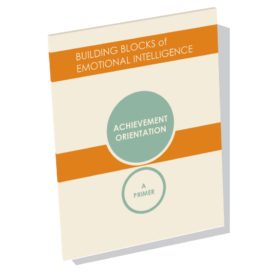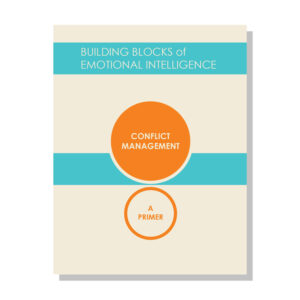

Why “Achievement” is About More Than Short-Term Gains
April 25, 2017 Time to read: 4 min.
Maintaining the competency of Achievement Orientation as a leader is complicated on many levels. One aspect is the time period in which achievement is being evaluated. Many businesses operate in very short transactional windows, and this challenges a leader’s ability to balance his or her personal drive with the needs of the organization as a whole.
Balancing sales and cash flow concerns with a longer view toward developing people is another reality of business – one that undermines the inner wisdom of many managers because it’s tough to do both at the same time.
Here’s how this played out in my leadership experience.
Many years ago, I was in a financial management position charged with bringing a business case to corporate headquarters for a fifteen million dollar capital equipment request. It involved significant changes in manufacturing tooling, was mildly controversial due to its scale, and was not easy for senior management to approve. There were competing needs across the company, so we not only had to believe in this program ourselves, but make a compelling case to senior management.
At the time, I managed a financial operations department of twelve employees, all but one of who were extremely busy. The one who wasn’t extremely busy was the newest on our team, new to the company and the least experienced. Should I take an experienced person off another equally important project to assure success here, or give the new guy a chance to learn something – yet risk a screw-up as a consequence? This is a question that managers face every day. It is a question that brings with it feelings of anxiety and self-doubt, and the added question of whether this will be the decision that torpedoes your own career.
To the risk-averse, it is generally an easy decision; pick the best person to do the job and get on with it. An alternative might be to pick the least experienced and micro-manage them to a successful outcome in order to maintain a sense of control. After brief deliberation, I chose a third path based in part on my awareness that my job would be easier, and in the long run the company healthier, if I viewed my responsibility to be in service of the organization as a whole, not just to myself and my career.
Taking calculated risks is part of how the competency of Achievement Orientation played out in my mind.
We had about four weeks until the presentation, so I called in the less experienced analyst and discussed with him what was needed for the business evaluation and presentation, who he could go to in manufacturing and engineering to get necessary information, and the stylistic approach required by headquarters for capital equipment requests. He said he understood what was required and we agreed to get back together to review his work in two weeks to make sure he was on the right track.
When we met again, he appeared to be moving in the right direction, though I pointed out that he’d made far too many assumptions in areas where the data was available, and that those gaps would be exploited by those with competing needs who wanted to scuttle our request. He seemed to understand and agreed to get the necessary data, incorporate it into his evaluation and we agreed to reconvene in ten days having tightened up those gaps. I wasn’t feeling good after this meeting. I wondered if he understood the importance of the project. He said all the right things, but I felt a distinct unease. Based on this feeling, I made an important decision: not to alleviate my feeling by either taking over the project or assigning it to another analyst but to commit to his growth.
I knew that in the worst case, with the information he’d have gathered by the following week I could pull something together to take to headquarters, but at this point I committed to a larger vision.
Two days before I was scheduled to fly to headquarters, we met to review his work. I was disappointed. He hadn’t gotten verification of his assumptions, and he hadn’t corroborated engineers’ hearsay. In a week we had hardly gained any ground. I was angry. Anger is both a constructive and a destructive emotion when used by a leader – it can motivate and commands attention, or it can undermine the individual and their authority. I told him that he needed to get focused. We had a day and a half and I didn’t care if he had to call the Chairman of the Board, the CEO or the Plant Manager himself, but I needed him to be at the airport the following day at 6am with the presentation as planned and the supporting data as required. No excuses.
At 5:45am the following morning he met me at the airport.
This was before the days of TSA and security checks when you could actually meet people at the airport at your gate to transfer documents. When I looked the presentation over, I saw that he’d done the work and done it well. He looked tired but satisfied, like he knew he’d just fully joined the team. I felt the same thing, that he’d fully joined the team. At that moment I knew my decision was the right one despite my earlier concerns. My boss told me that later that day he’d seen this analyst in the cafeteria and said, “You look like hell, what happened to you?” His response? “I had to stay up all night to get the business case done, but it was my own fault.” When my boss shared that with me I felt certain that I’d made the proper decision for the organization as a whole, and vowed to myself to choose that path whenever possible.
It is difficult to make decisions that may take months or years to manifest when we live in a world in which decisions are measured in days and weeks. The essence of good leadership is knowing how to balance those short and long-term gains.
Recommended Reading:
Our new primer series is written by Daniel Goleman and fellow thought leaders in the field of Emotional Intelligence and research. The following are available now: Emotional Self-Awareness, Emotional Self-Control, Adaptability, and Achievement Orientation, with new releases monthly throughout 2017.
For more in-depth insights, see the Crucial Competence video series!








